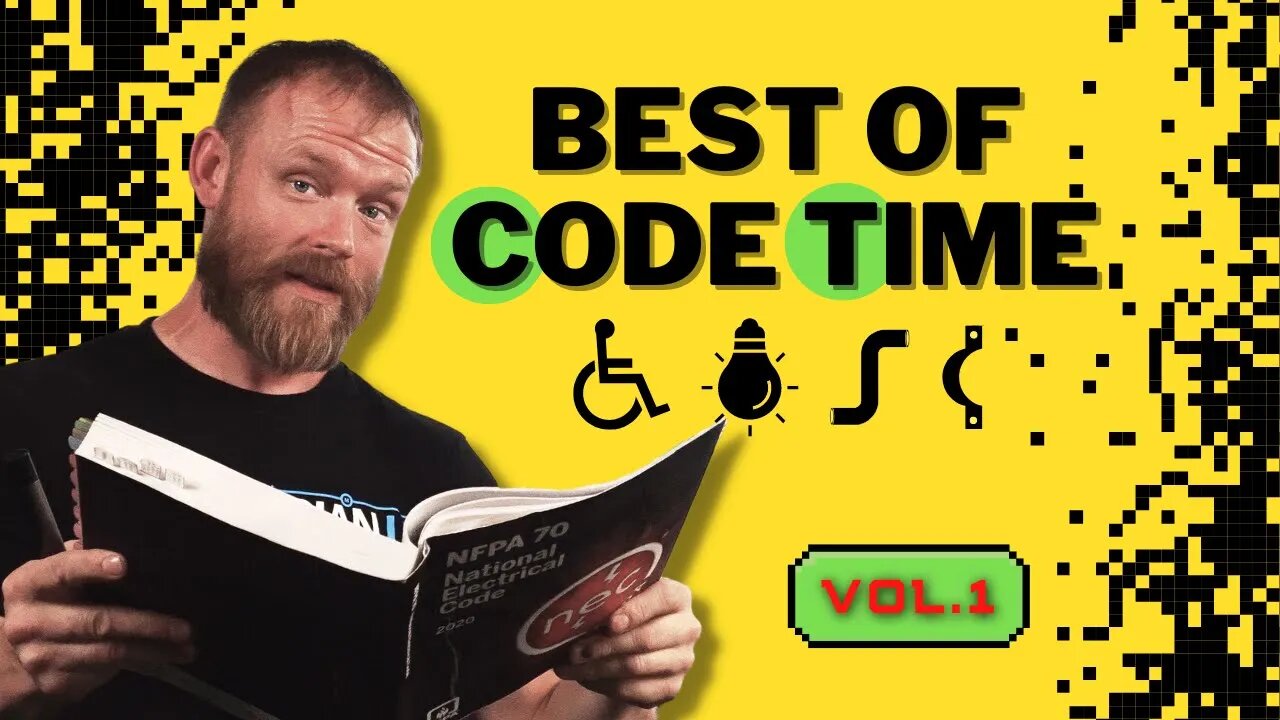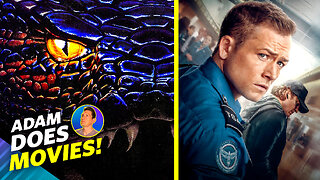Premium Only Content

BEST OF CODE TIME: ADA Requirements, Luminaires in Closets, Rigid Conduit Bends and EMT Securing
When it comes to the installation of our electrical work, we are not allowed to just put things in how we see fit! We must adhere to at least the minimums and maximums of the current NEC. In the latest episode of Electrician U, Dustin discusses some of the ADA requirements, luminaires in clothes closets, GRC bending and EMT securing.
🤘⚡️MEMBERSHIP⚡️🤘
JOIN ELECTRICIAN U - become a member and get:
FREE Continuing Education every year
FREE Practice Exams
FREE Monthly Video Courses
FREE Weekly Live Instructor-Led Classes
FREE Monthly Educational Newsletter
Premium Members-Only Content
Private Discord Channel
Monthly Members-Only Discord Chats
Sign up here --- https://www.electricianu.com/electrician-u-membership/
🎧🎹MUSIC AND VIDEO:🎹🎧
https://www.facebook.com/descantmv
🎬✍️ART AND ILLUSTRATION:✍️🎬
https://www.daverussoart.com
Annex J of the NEC discusses ADA standards for accessible design. This means that we are to install our electrical work that will accommodate those who have certain needs. For most of us, reaching a receptacle installed at 15” off the ground would generally not be an issue. But for a person who is in a wheelchair, having to reach down that far to plug something in may not be that easy. The same can be said for higher items like switches; having to reach above 48” may pose a problem for someone in a wheelchair. So, per the ADA standards, receptacles are generally mounted at 18” (as the minimum is 15”) and switches at 48” to the top of the box (48” switch height being maximum) to allow wheelchair bound individuals to access those items.
Clothes closets typically have a light fixture in them so someone can see what it inside! However, we cannot put a fixture just anywhere we want within the closet. Light fixtures tend to get warm (even hot) when they are on for any length of time, and since most types of clothes can catch fire, we need to be mindful of where we place the fixtures in a closet. Article 410.16 of the NEC discusses luminaires in clothes closets. This article tells us what types of fixtures we are allowed to install in a closet and where we can put them. For instance, we can use surface or recessed incandescent or luminaires with completely enclosed light sources, but we cannot install incandescent luminaires with open or partially enclosed lamps or pendant luminaires. It is just too easy for those types to come into contact with clothes and would pose a fire risk if installed. Article 410.16C also gives us locations where we are allowed to place a fixture within a closet dependent upon the type of light fixture being used. For instance, a surface mounted completely enclosed LED or incandescent fixture must be placed 12” from the clothes storage space while a recessed completely enclosed LED or incandescent can be 6” from the clothes storage space.
Article 344 of the NEC governs the installation of Rigid Metal Conduit. As with other types of rigid conduit, we are allowed a maximum amount of bend in a run before we need to set a box or other type of pull point, that number being 360 degrees. A common mistake made by newer electricians is to say we are allowed 4 90-degree bends. While 4 90-degree bends DOES add up to 360 degrees, we still need to account for any other bends within the conduit run such as offsets! So, you could have 4 90-degree bends, but there cannot be any other bends in the run.
Article 358 of the NEC discusses EMT and its usage and article 358.30 is where we would find the strapping/supporting requirements. In essence, for EMT, we are required to strap our conduit within 3’ of every outlet box, junction box, device box, cabinet, conduit bodies (LB for example), or other tubing termination and then at intervals not to exceed 10’. We are certainly allowed to install our strapping closer together, but not further apart than that. Keep in mind that the NEC is MINIMUMS and MAXIMUMS. We can always go above and beyond what the NEC directs us to, just not less than.
We hope this has been helpful in explaining a few of the many code and informational sections within the current 2020 NEC Code Book. Is there a topic you would like to see discussed in a video? Leave a comment in the section below and let us know! Please continue to follow Dustin and Electrician U as we are constantly adding to our content to assist our followers become the best that they can be!
-
 0:57
0:57
Electrician U
1 year agoMy FAVORITE Tester for Electricians - What Hand Tools Are YOU Missing
5.35K -
 1:23:14
1:23:14
Talk Nerdy 2 Us
10 hours agoSpecial Guest - Next UFC Superstar - Dani Aleksovska
56.2K -
 1:02:40
1:02:40
Man in America
12 hours agoThe Elites Are Losing Their War on Our Children w/ Robert Bortins
32.9K7 -
 3:30:43
3:30:43
I_Came_With_Fire_Podcast
14 hours agoGovt' Shutdowns, VA Scandals, MORE Drones, Syrian Strikes and staged rescues , and The DHS!
96.6K22 -
 56:55
56:55
The StoneZONE with Roger Stone
9 hours agoTrump Should Sue Billionaire Governor JB Pritzker for Calling Him a Rapist | The StoneZONE
76K11 -
 59:21
59:21
Adam Does Movies
9 hours ago $2.26 earnedMore Reboots + A Good Netflix Movie + Disney Live-Action Rant - LIVE
48.5K1 -
 36:28
36:28
TheTapeLibrary
18 hours ago $11.54 earnedThe Disturbing True Horror of the Hexham Heads
74K7 -
 6:08:00
6:08:00
JdaDelete
1 day ago $6.72 earnedHalo MCC with the Rumble Spartans 💥
52.8K7 -
 3:52:22
3:52:22
Edge of Wonder
13 hours agoChristmas Mandela Effects, UFO Drone Updates & Holiday Government Shake-Ups
45.6K15 -
 1:37:36
1:37:36
Mally_Mouse
11 hours agoLet's Play!! -- Friends Friday!
48.3K1